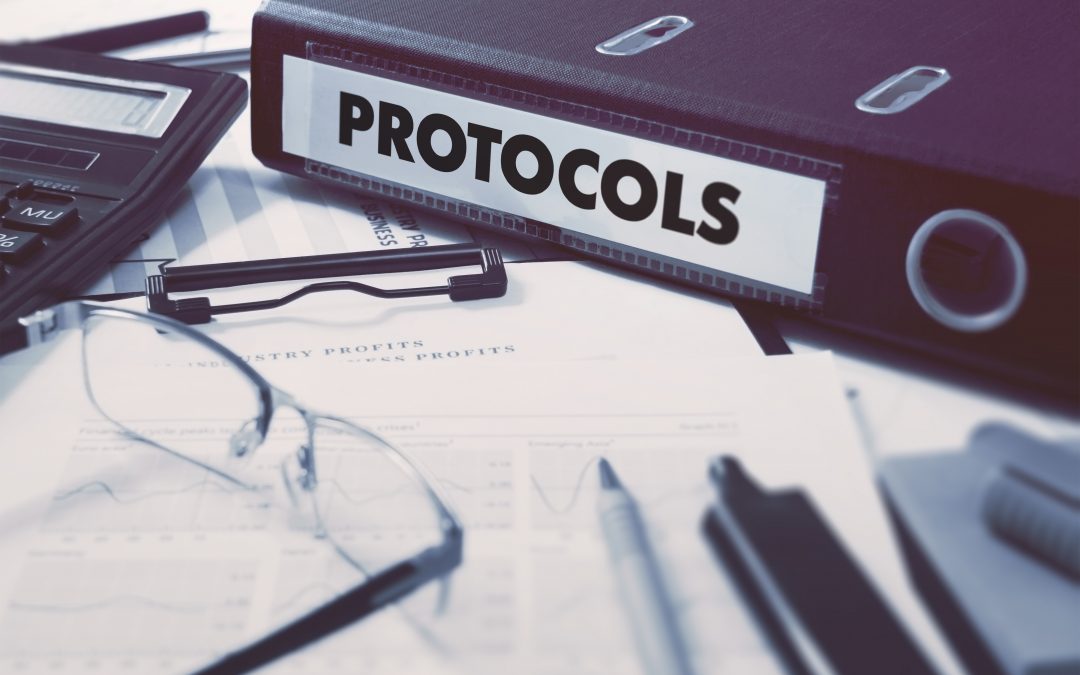The C-GET and C-MOVE protocols are part of the DICOM communication protocol, while the WADO and QIDO protocols refer to the DICOMweb protocol. Such processes are responsible for sending, retrieving and consulting medical imaging and information related to them.
The names related to medical imaging in their digital format are numerous.
The names go from simple things like DICOM Viewer, through dense names such as PACS server and image acquisition protocols, such as WADO, QIDO C-GET, and C-MOVE. The evolution is constant and is needed from time to time, grasp all that information.
The DICOM protocol is the standard format that all medical imaging must follow and the C-GET and C-MOVE protocols are part of it.
The DICOMweb protocol is a set of definitions for imaging and studies that are on the web, and the WADO and QIDO protocol are part of it.
Based on this, we made a small compendium on the protocols that follow the DICOM and DICOMweb standard, to make life easier for all DICOM Viewers users out there.
WADO or, Web Access to DICOM Objects
The WADO protocol is a standard for retrieving DICOMweb imaging. It allows the user to obtain images, series and specific cases that are stored on a DICOM server.
Its name is complemented by the suffix RS, which indicates that it belongs to a specific group of protocols – RESTful DICOM -. The protocols belonging to this group, have as objective the functions of query – retrieve, that is, to consult and retrieve any DICOM object that the user may need.
To guarantee the security and the origin of the imaging obtained, the WADO protocol can be used in association with extra security layers, such as TLS or HTTP.
To use the WADO protocol, it’s necessary to have a DICOM Viewer that has the built-in protocol, such as Athena DICOM Expert and Athena DICOM Essential.
QIDO, or Query based on ID for DICOM Objects
The QIDO protocol follows the same specifications as the WADO protocol. Exclusive and with the same RS suffix, the QIDO protocol is used only for DICOMweb queries.
Belonging to the same group RESTful DICOM, its differential lies in allowing the user to search for studies, series, and cases by the patient’s identification number (ID). With the QIDO protocol, the user also receives the unique identifiers for each patient for dynamic use, such as retrieving exams or rendered presentations.
To use it, it’s also necessary to have a DICOM Viewer that incorporates the specifications stipulated by NEMA. If you don’t know or don’t remember about NEMA, in our post “What is DICOM Viewer and how to use it?” we covered a little of the subject.
The QIDO protocol also allows the addition of extra layers of security such as TLS or HTTPS. These security protocols are found in DICOM Viewers such as Athena DICOM Expert and Athena DICOM Essential.
C-FIND, C-MOVE, and C-GET
The search and retrieval of DICOM imaging did not initially use the web protocol. The communication used the DICOM protocol itself. To perform a query is necessary to use the C-FIND method.
For recovery, it can be done in two ways, using the C-MOVE or C-GET method.
The recovery methods C-MOVE and C-GET are very similar, with only technical implementation differences, as both inform other applications/server when executing file transfer operations are happening.
For a DICOM Viewer to have C-MOVE and C-GET operations in its structures, it is necessary to follow a series of standards stipulated and approved by NEMA.
TLS or, Transport Layer Security
TLS is a security protocol widely used in websites and programs since it digitally certifies the protection of the data used. TLS replaces the old SSL to ensure more security during its use.
HTTPS, or HyperText Transfer Protocol Secure
If you have already noticed the internet addresses, you will notice that many or almost all of them start as follows: https: //
HTTPS is an evolution of HTTP transfer protocol and is the safest form of the protocol.
For HTTPS to work, the server that the website or program is inserted must have a TLS certificate guaranteeing the origin of the data and information that the user is about to receive, freeing it from risks and the like.
All of these terms and acronyms can seem confusing and unnecessary. However, when using a DICOM Viewer it is essential to be familiar with them. When purchasing DICOM Viewers be sure to check if they have these safety specifications and are committed to the origin of the images to be acquired. If you want, compare them with the features and tools of reliable software, such as our own solutions, Athena DICOM Expert and Athena DICOM Essential, since they have all the certifications, protocols and standards required by most national and international bodies and take your doubts!

